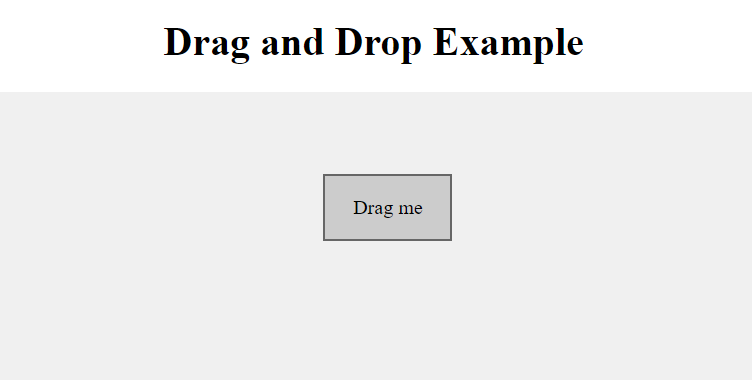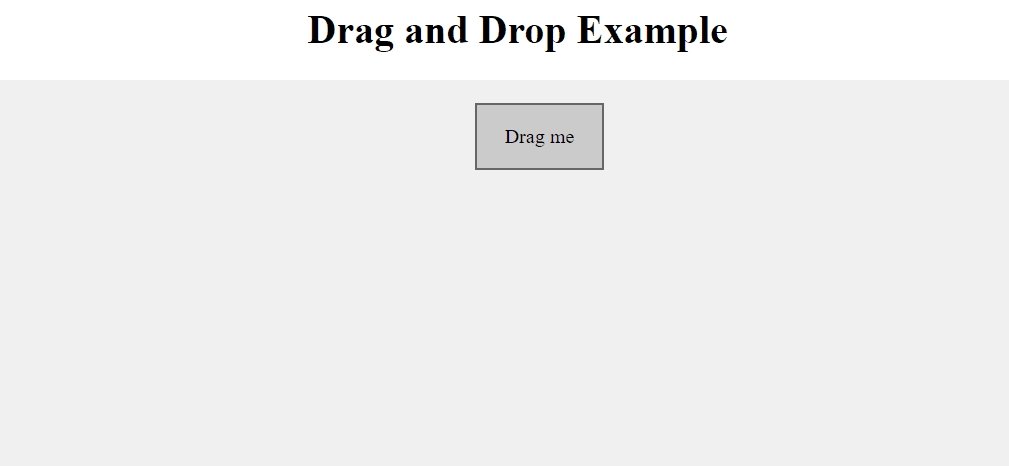Implementing Drag and Drop Functionality with useRef
Last Updated :
04 Apr, 2024
Implementing drag-and-drop functionality using React’s useRef hook involves creating a reference to the draggable element and handling drag events. The useRef hook allows us to access and manipulate DOM elements directly in React functional components. By using useRef, we can track the position and behaviour of the dragged element during drag-and-drop interactions efficiently.
Output Preview:

Prerequisites:
Steps to Setup the Application:
Step 1: Create a reactJS application by using this command
npx create-react-app drag-and-drop-app
Step 2: Navigate to project directory
cd drag-and-drop-app
Folder Structure:

Approach to create Drag & Drop Functionality with useRef :
- First define CSS styles for the drag-and-drop container and draggable items using classes like
.drag-and-drop and .drag-item. - Use
useRef in the React component to create a reference to the draggable item (dragItemRef in this example). - Implement
handleDragStart function to set data during drag start and update the dragItemRef with the dragged element. - Create
handleDragOver function to prevent default behavior, calculate new position based on mouse coordinates, and update the dragged element’s position accordingly. - Render the drag-and-drop container and draggable item components in your main App component (
App.js) and handle drag events accordingly.
Example: Illustration to design drag and drop functionality using useref.
CSS
/* DragAndDrop.css */
.drag-and-drop {
width: 100vw;
height: 100vh;
background-color: #f0f0f0;
}
h1 {
text-align: center;
}
.drag-item {
width: 100px;
height: 50px;
background-color: #ccc;
border: 2px solid #666;
display: flex;
justify-content: center;
align-items: center;
font-size: 16px;
cursor: move;
position: absolute;
}
// DragAndDrop.js
import React, { useRef } from 'react';
import './DragAndDrop.css';
const DragAndDrop = () => {
const dragItemRef = useRef(null);
const handleDragStart = (e) => {
const target = e.target;
e.dataTransfer.setData('text/plain', '');
dragItemRef.current = target;
};
const handleDragOver = (e) => {
e.preventDefault();
const target = dragItemRef.current;
if (!target) return;
const x = e.clientX - target.offsetWidth / 2;
const y = e.clientY - target.offsetHeight / 2;
target.style.left = x + 'px';
target.style.top = y + 'px';
};
return (
<div
className="drag-and-drop"
onDragOver={handleDragOver}>
<div
className="drag-item"
draggable="true"
onDragStart={handleDragStart}>
Drag me
</div>
</div>
);
};
export default DragAndDrop;
// App.js
import React from 'react';
import DragAndDrop from './DragAndDrop';
const App = () => {
return (
<div>
<h1>Drag and Drop Example</h1>
<DragAndDrop />
</div>
);
};
export default App;
// index.js
import React from 'react';
import ReactDOM from 'react-dom';
import App from './App';
ReactDOM.render(
<React.StrictMode>
<App />
</React.StrictMode>,
document.getElementById('root')
);
Step to Run Application: Run the application using the following command from the root directory of the project.
npm start
Output: Your project will be shown in the URL http://localhost:3000/

Share your thoughts in the comments
Please Login to comment...